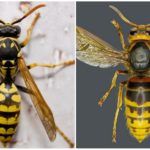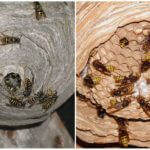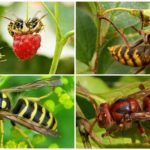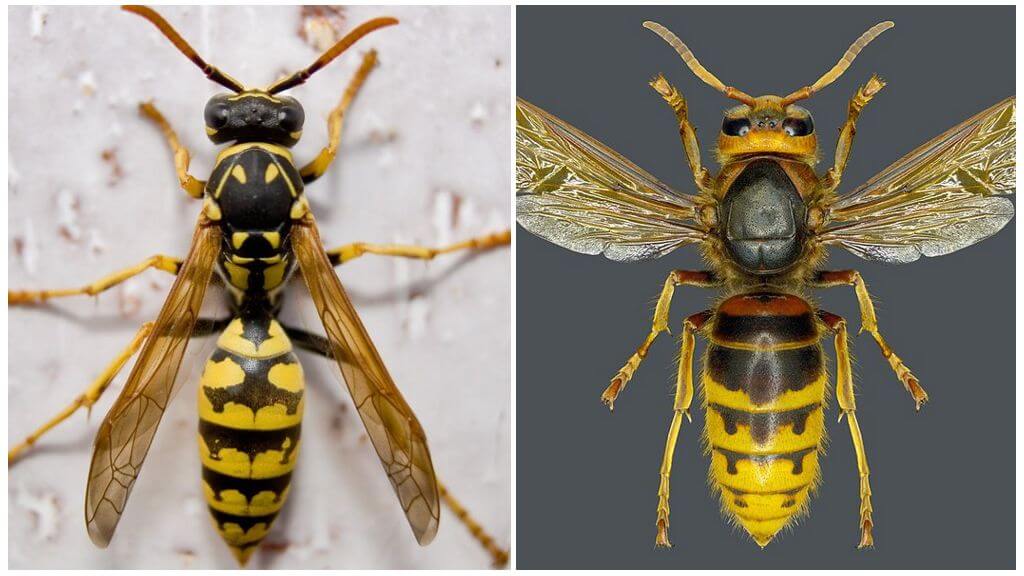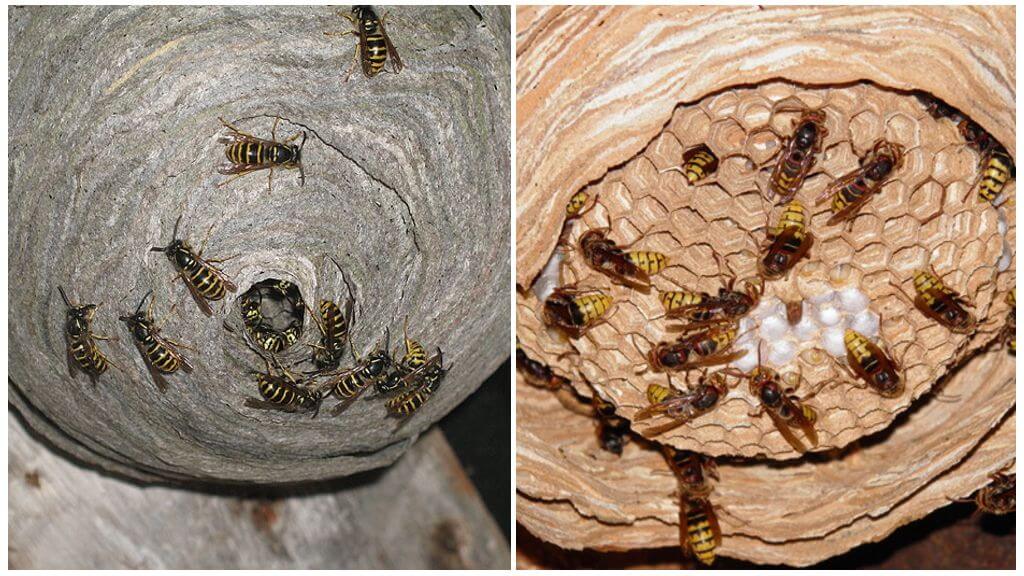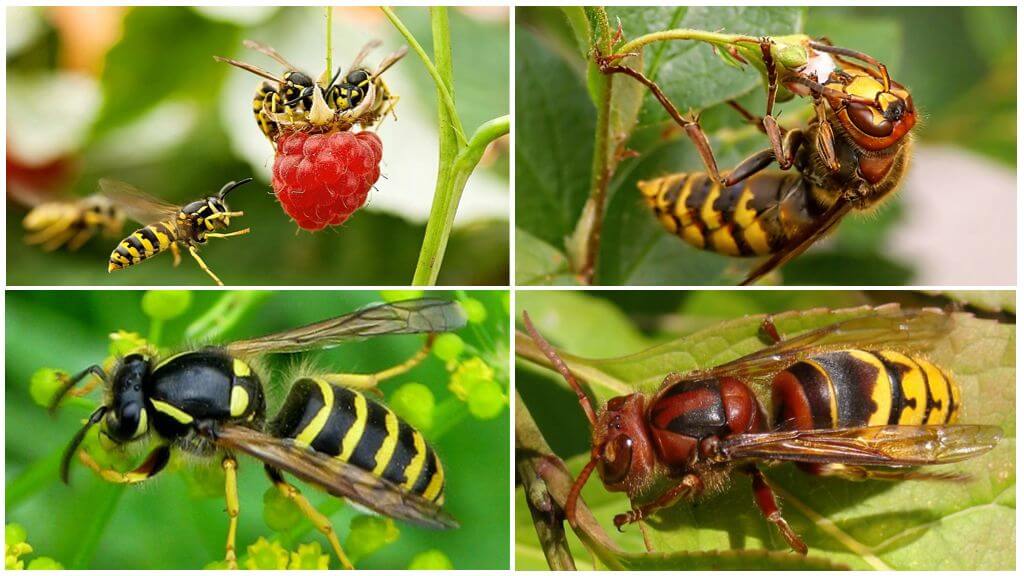What is the difference between the hornet and the wasp
- Wasp and Hornet
- Insect nests
- Wasps and Hornets
The wasp and the hornet lead a similar way of life, have external similarities. But unlike wasps, hornet - a less aggressive creature, keeps away from a person if he flies into a house, in every possible way tries to get out through the open window, doors, cracks. The question of how the hornet differs from a wasp is not entirely correct, since both insects belong to the same order of the "wasp." The hornet is the largest representative of the genus.
Peculiarities of insect life
A comparison of wasp and hornet should start from an analysis of insect behavior. There are wasps public and solitary.
In the first case, the head of the family is prolific. female uterus. After wintering in a secluded place, it forms honeycombs, new nests, and lays eggs. Of the larvae are born working individuals who are starting to build a nest. Over time, the population increases, there is a division into castes. Each group of insects fulfills its role - protects the nest, is engaged in construction, searches for food, feeds the larvae, etc. With the onset of cold weather, working individuals die, only fertilized females remain to winter.
Solitary wasps too build nests, but they are much smaller than in public wasps. The nest serves as a shelter, protection from enemies, cold. There is no clear hierarchy in the family, each female can leave offspring. Some wasps lay larvae in the body of other insects. When a larva is born, it is immediately provided with food - it eats away the insides of the victim.
Hornets belong to the public wasps. The uterus leads the big family. Within the family responsibilities are clearly divided. Working hornets are looking for food, build a nest, take care of the uterus, larva, protect the family from enemies.
Interesting!
Hornets are the main enemies of bees, because they love sweet, especially honey, pollen. With powerful jaws, the predator bites the body of a bee in half, in a few minutes a swarm of hornets destroys a whole hive of honey bees.
Nest features
How to distinguish a hornet's nest from a wasp, there are several signs. Both insects build nests with a special secret. Chew wood, sticky mass form the honeycomb. After time, the mass hardens, becomes like paper.
Nests have the shape of an oval, pear, ball. Consist of many tiers. The larger the nest, the more numerous the family. Wasps and hornets build their homes in old hollows, bird nests, under tree branches, in farm buildings, under a roof, in the attic.
On a note!
It is possible to distinguish a hornet's nest from the house of hornets by color. Wasps are gray, brownish at hornets. For the construction of the last insects use rotten wood, birch bark, so the color of the building material becomes brown.
External differences
All representatives of the OS are distinguished by a thin waist, long belly. However, at the hornet it is somewhat more voluminous, rounder than that of the wasps. It is worth paying attention to the colors. Bright yellow stripes alternating with black stripes, with a clear border - wasps. At hornets, black stripes alternate with orange and blurry borders.
Recognize the insect can be on the head. At hornets it is big with a wide nape. The mustache is somewhat twisted, the eyes are clearly visible. The body size of the working individual of hornets is about 23 mm, the uterus reaches the size of 30 mm. The wasps are 5-10 mm smaller. The sting has a similar structure, but also differs in size. In hornets it is about 5 mm long.
The wasp and hornet differences in appearance are insignificant, but looking closer, you can determine who is who.
Wasp appearance:
- The body size of a typical representative is from 1.5 cm, the uterus grows to 2.5 cm, the male is somewhat larger than the working individual.
- Abdomen barrel-shaped, covered with hairs, there are characteristic yellow-black stripes.
- Wings are webbed, 2 pairs.
- On the head are two large compound eyes. The insect can see around itself at 180 degrees. On the top there are 3 more simple eyes.
- Long whiskers function as an antenna, help insects to orient themselves in space, find food, prey, pick up signals from their relatives.
The appearance of the hornet:
- The body size of the uterus is from 25 mm to 35 mm, the working individuals are slightly smaller.
- The head is large with a broad nape, eyes in the shape of the letter “C”, of a reddish-orange color.
- Long curved mustache.
- Abdomen oval, wide with orange-black stripes with a fuzzy border.
Insects can also be distinguished by their behavior relative to humans. It is the ability to attack, attack excites many people. As each of these insects has a sting, it injects poison.
Human interaction
Wasps are extremely aggressive creatures that rush to attack at the first sign of danger to themselves. Complicating the situation is the fact that insects often fly to human possessions. Ripe fruits, vegetables, fish, meat, sweets attract them. Adults feed on juices, young feed on protein foods. Wasps freely fly into the house through open windows, but bite only if they feel life threatening.
The difference in the behavior of hornets is due to taste preferences. Hornets - sweet tooth.They are attracted by ripe fruits, berries, honey, sugar, nectar. In relation to the person, they behave non-aggressively, but they are able to attack if they see the danger to themselves or their families. For the larvae kill other insects, caterpillars, spiders.
Hornets bite hurt, cause an allergic reaction. But bite less painful than wasp. A red spot appears on the skin, swelling, pain, discomfort, fever at the site of the lesion. Only in the case of individual intolerance a person develops a strong allergic reaction with nausea, vomiting, difficulty breathing, and general weakness.
Important!
Especially dangerous is the attack of insects on a man by a swarm. One individual can sting several times a minute. The sting penetrates the human skin, insects inject poison. The more poison gets into the blood, the greater the consequences.
Hornets play a very important role in pollination of plants, therefore their presence in gardens, in vegetable gardens, flower beds is desirable. Wasps are also involved in the process of pollination of plants, but not so intensely.

